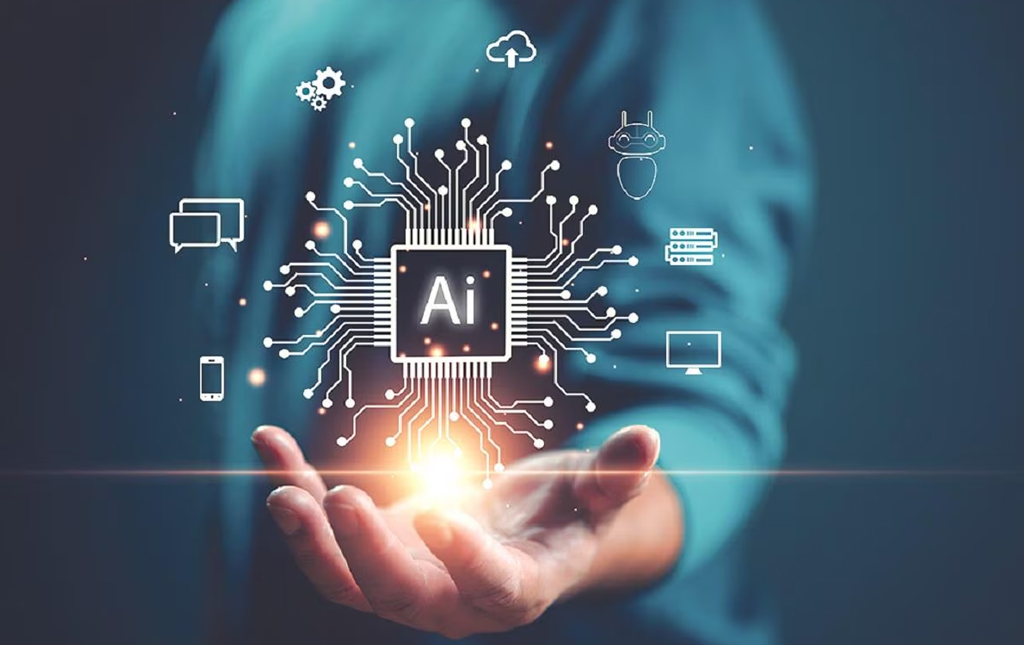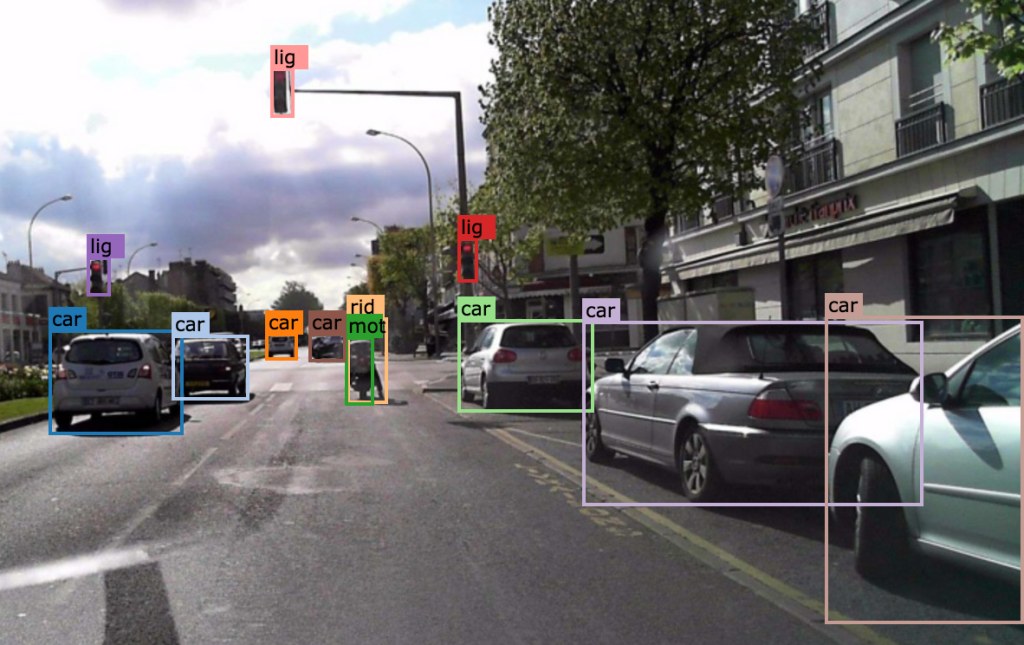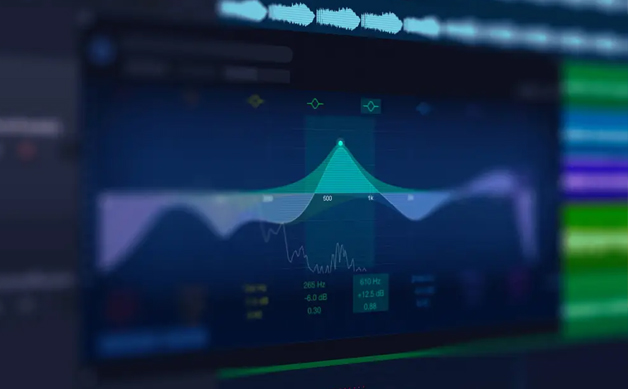Data is the first thing that strikes anyone’s mind when discussing Artificial Intelligence and Machine Learning. The datasets usually include various videos, images, or both together. Before training any model based on an algorithm, these videos and images must be annotated and labeled reliably. This is possible with the help of data annotation. This fundamental process ensures accurate performance of the various tasks on the computer systems with the required insight and precision.
What is data annotation, what are the challenges involved, what are the tools used for it, and how is it done? Are you new to this concept? Or looking for some in-depth details on various aspects related to this term? Here is an article completely dedicated to data annotation and everything you are searching on the internet about it.

Introduction to Data Annotation
Data annotation proves to be the keystone for developing computer models as they understand the visual world accurately and respond to it as well. The process includes tagging, labeling, or attributing videos, images, audio files, and texts in the database. This eases the machine learning process as it helps in understanding the algorithms and classifying the information properly.
Previously, this process was ignored by various businesses, however, since the last decade, it has gained popularity as it has helped machine learning systems work excellently. Without a data annotation process, machine learning algorithms would fail to work on the unstructured databases obtained from social media posts, emails, audio and image data, sensor data, etc., as they would struggle to bifurcate the information. With the help of annotated data, various AI models like speech recognition, chatbots, automation applications, etc. give desired outcomes.
Why is Data Annotation Important in Machine Learning?
Understanding the vital role of data annotation in Machine learning is very important when looking to endeavor into the realm of AI. No matter whether you are a curious enthusiast or a professional data scientist, learning about this process can have a huge impact on the machine learning models and the possible outcomes.
Data annotation is the strength of machine learning algorithms. It provides all the required context for the computer models to learn as well as make correct predictions. By categorizing and labeling data points, data annotators teach the algorithms which makes recognizing patterns and making decisions easier. Data annotation authorizes machines or computers to understand things or tasks and perform them as well. Annotated data is important for supervised learning, in which algorithms use labeled examples for learning.
Testing or training datasets with annotated data helps machine learning models sort and interpret the incoming data efficiently. Our data annotation tech experts are ready to help you with quality data that boosts the algorithms to learn independently and give results with less human involvement.
Data Annotation – Why Is It Necessary?
Data annotation is very crucial for the data-centered commercial world today. It helps the computer systems deliver precise results within a fraction of the time. When any ML module is still in the development process, a huge volume of AI training datasets is filled in. This makes the module capable of identifying elements and objects at the time of decision-making.

Through the data annotation process, the modules differentiate between different things, words, phrases, etc. If the data wouldn’t be annotated, every information, image, or video would appear similar to the machines as they wouldn’t have any in-built knowledge or information about it.
From financial industries to healthcare industries, every business looks for data annotation to enable AI algorithms to acquire patterns and give reliable predictions. Implementation of this process not only boosts technological advancements but also invites positive changes and innovation in businesses.
Data Annotation Tools – An Introduction
Now that we are aware of what is data annotation, the next subtopic is regarding data annotation tools. A data annotation tool is an on-prem, containerized, and cloud-based software solution widely used for annotating fine training data for ML models. Most of the companies still prefer using tools built by themselves such as open source tools, freeware tools, or custom-built tools available in the market, while others look for a particular vendor for working on complex annotations.
These tools are created to handle particular types of data like audio, text, video, images, etc. Features like polygons or bounding boxes are widely available with such data annotation tools for labeling the images. The annotators simply have to select the right option and perform the task.
What Are The Different Types of Data Annotation?
The data annotation process can be carried out in various forms or types. Each type or form has different necessities and outcomes. Here are some of the popular data annotation types.
Image Annotation
Image annotation or image labeling includes assigning a label or tag to a particular image that describes the complete content of the image. This method is generally used for cataloging tasks. Through the process, models learn how to classify different images based on given labels. This usually includes the usage of semantic segmentation and bounding boxes that are used in various AI-based apps like computer vision, facial recognition, autonomous vehicles, robotic vision, etc. When the models are trained, keywords, identifiers, and captions are added in the form of attributes to the images.

Image annotation is further classified into three different sections. Let’s explore them.
- Image Classification: This includes allocating predefined labels or categories to the images based on the content of the images. This kind of annotation helps train AI models to group and recognize images inevitably.
- Object Detection or Recognition: This process includes identifying and tagging particular objects in an image. This kind of annotation helps train AI models to recognize and locate objects in actual videos or images.
- Segmentation: In this process, the image is divided into various segments and every segment resembles a particular area or object. This kind of annotation process is highly used by AI models to evaluate images at a particular pixel level. This enables accuracy in object recognition as well as understanding the scene.
Audio Annotation
Audio annotation covers aspects like speaker demographics, language, intention, mood, dialects, behavior, and emotions. The process includes identifying specific parameters along with tagging through techniques like music tagging, audile scene classification, timestamping, etc.

Along with the verbal signs, other wordless indications like background sound, breaths, and even silence can be annotated for a detailed understanding of the particular audio file.
Video Annotation
A video is nothing but a compilation of various images that give an effect of motion in the objects. Every image in the video is termed as a frame. Similar to image annotation, video annotation uses skills like bounding boxes for recognizing the cue frame-by-frame. Hence, video annotation is a process that adds polygons, bounding boxes, or key points to label different objects in each frame.

When all the frames are combined, the pattern, behavior, movement, etc. can easily be studied by the AI models. The data obtained from this process is important for models that perform tasks like tracking and object location detection. With the help of video annotation, concepts like motion blur, object tracking, location tracking, etc. can easily be executed in various systems.
Text Annotation
Businesses highly prefer having databases that are text-oriented to obtain maximum information and accurate insights. The text database is obtained from various sources like customer feedback forms, social media platforms, survey forms, and much more.

The process of text annotation involves assigning categories or groups to paragraphs or sentences in a particular document. Unlike human beings, machines fail to understand words, phrases, sentences, or any conversation. Elements like humor, sarcasm, and other similar concepts are also unknown to the machines, which makes text annotation a difficult task. To work on this, there are certain stages of text annotation. Let’s explore them briefly.
- Semantic Annotation: This kind of annotation is carried out by proper key phrase labeling and identification parameters to make the services, products, or objects legible to the machines. Semantic annotation also makes conversation with Chatbots similar to humans.
- Intent Annotation: Through this type of annotation, the machines can learn about the language used by the user and his intentions. This helps the models in differentiating a recommendation or request easily while making bookings, etc.
- Sentiment Annotation: This annotation type includes annotating the textual data through sentiments it carries like neutral, negative, or positive. It is used when models need to be trained to evaluate and recognize the emotions conveyed by the text, particularly in sentiment analysis.
- Entity Annotation: Entity annotation involves labeling amorphous sentences to give them a meaningful format that is easy to understand by the models. This is carried out by entity linking and named entity recognition. When the names of organizations, events, people, locations, etc. are tagged, it is called name entity recognition. On the other hand, when opinions, facts, phrases, or sentences are labeled, it is termed entity linking. A combined effort of both of these helps in establishing a relationship between the statement and the related texts.
- Text Categorization: Text categorization is carried out by labeling and classifying paragraphs or sentences based on primary parameters like categories, opinions, subjects, trends, etc.
Data Annotation Process – Different stages of the process
The entire process of data annotation is built up with several crucial steps that ensure accurate and quality data annotation for ML applications. Here are the first steps taken by a data annotator while working on the data annotation process once the annotator is ready with the data scope and purpose of the process.
- Gathering the data: The foremost step is to obtain the data. The data is collected from various sources for the annotation process and it can be in various forms including videos, text, images, or even audio files. The data needs to be high in quality and relevant to the project as this would help in achieving the goal.
- Preprocessing the collected data: Once the data is collected, the next step is preprocessing the data to enhance or standardize it. For this, tasks like transcribing videos, formatting text, or deskewing images, are carried out. This step confirms that the data can now be annotated.
- Choosing the correct data annotation tool: Next is the selection of the right data annotation vendor or tool as per the requirement of the project. Some of the widely used data annotation tools include V7 used for image annotation, Nanonets used for data and document annotation, and Appen used for video annotation. Also, while selecting the right data annotation tool, certain factors need to be considered like annotation capabilities, user interface, integration with other AI models, collaboration, scalability, etc.
- Outline the annotation strategies: Once the annotation tool is selected, it becomes necessary to train the annotators and form quality control tasks. For this, the next step is to develop clear strategies for both the annotation tools and annotators to ensure accuracy and consistency while the entire process is carried out.
- Labeling of data: The next step is to label the data. This is carried out with the help of either the data annotation software or human annotators. While labeling the data, every guideline or strategy established is followed precisely.
- Initiate a quality check: Once the annotation task is over, it is time to evaluate the work. The data needs to be rechecked to ensure consistency, quality, and accuracy. For this, annotators use both a manual review for a comprehensive evaluation and advanced automated tools for identifying possible irregularities and errors.
- Transferring the data: Once the data is rechecked, it needs to be transferred to a particular format. For this, annotators use advanced platforms that help in exporting the data effortlessly to different professional software applications like Nanonets.
The completion period of the data annotation depends on various factors like the complexity of the data, size, and availability of the resources.
Important Features of Data Annotation Tools
On completion of the data annotation process, it’s not only the quality of the dataset that counts. The data annotation tools used in the process of training the AI models also have a huge impact on the outputs. Henceforth, the selection of the right data annotation tool according to the project requirement is very important.
Let’s have a quick view of the essential features of the data annotation tools that should be considered for selecting the right one.
- Dataset Management
The process of data annotation initiates and concludes is an inclusive method of managing different datasets that need to be annotated. It is important to consider the tools that would be used for annotation as they would support and import huge databases and the file format that is to be labeled including merging, cloning, sorting, filtering, and searching of datasets.
The accuracy of any annotation depends on the type of tool selected, and hence, every possible requirement needs to be considered at the time of selecting the tool. At last, the annotated data should be saved in a particular folder. Nearly every tool supports network and local storage, however, the cloud storage might or might not support desired file storage folders. - Annotation Skills
This is the basic feature the annotation tools are considered for. The capabilities and skills they carry for labeling your data are kept in mind while selecting the tools. However, every tool is different and focuses on particular labeling skills. Certain tools offer a mixture of different tools or skills that provide a customized solution to all the requirements. The tool should be capable of annotating images or videos from computer vision, transcriptions, text or audio from NLPs, etc.
It should also carry features like semantic segmentation, bounding boxes, sentiment analysis, co-reference solutions, interpolation, cuboids, and much more.Apart from all these, there are various annotation tools powered by AI that come with AI modules that help in learning the patterns, images, texts, etc. of the annotator automatically. Annotators use such advanced modules to receive improbable assistance while implementing quality checks and optimizing annotations. - Data Quality Control
The performance of any AI or machine learning model depends on the quality of the data. Through the annotation tools, it becomes easier to manage the verification process and quality control as the tool would have entrenched QC facilities within. Hence, the annotators can collaborate with the team members in a better way for improved workflows.Through this feature, the annotators can track and mark comments, track the people who change the identities to files, try labeling agreements, restore the former version, etc. - Security
Talking about security, every business is concerned about its data. Many times, the data annotation company gives confidential data that includes details like intellectual property, personal information, etc. Hence, they focus on the security of their data before handling it for annotation purposes. So, the annotation tool should be capable of providing utmost security like limiting access to certain team members, preventing illegal downloads, etc.
Again, the security protocols and standards need to be fulfilled while selecting the annotation tool. Some annotation tools also record the annotation details like annotation author, time, date, etc. which helps in determining whether the tool would help in maintaining amenability or not. - Workforce Management
Even if the annotation tool is based on AI automation features, it still needs human workforce assistance when operated. Humans would have to check on the quality and exceptions to have accurate outputs. The advanced tools would serve workforce management skills like productivity analysis, task assignment, etc. for every task and sub-task.
Again, the tool should also possess a nominal learning curve as the annotation process is time-consuming. And this is not acceptable. Hence, the tool needs to be seamless and intuitive for anyone who uses it for a quick start.
Secret Advantages of Data Annotation
By now, it is clear that the data annotation process is important for enhancing machine learning systems and serving users with improved understanding. Scroll down to learn some of the secret benefits of the annotation process.
- Upgraded training productivity: With the help of data labeling, the ML models can be trained efficiently. It also improves the accuracy of the outcomes.
- Improved Accuracy Levels: When the data is accurately annotated, the algorithms can learn and adjust in a better way. This improves the accuracy of the outcomes or results in future tasks.
- Limits human interference: The advanced annotation tools limit the need for human involvement. This benefits by reducing associated costs and simplifies the process as well.
In short, it can be concluded that data annotation boosts accuracy in machine learning systems and reduces the manual effort and other relevant costs that were initially paid for training the AI models.
Challenges in Data Annotation
No doubt, data annotation is very crucial, but it still comes with various challenges that have a huge impact on the accuracy, efficiency, and overall success of the AI and machine learning models. Let’s take a look at the challenges, and understand how they are important while developing the technologies.
- Data annotation cost: Whether you opt for automatic annotation or manual annotation, both are costly in their ways. Manual annotation needs a good investment of time, resources, and effort which increases the cost. While in automatic annotation, expenses increase for maintaining the data quality.
- Annotation accuracy: When the annotation process is carried out manually, errors might lead to poor-quality data. This directly affects the prophecies and performances of the ML or AI models. When the business works with poor data quality, it reduces the revenue of the company by up to 15%.
- Scalability: The annotation process can be both time-consuming and multifaceted when the data is huge in quantity. At times, it becomes difficult for the companies to maintain the efficiency and quality of the data while working on the data annotation process.
- Privacy and security of data: Companies generally provide sensitive data for annotation like medical records, financial data, personal details, etc. When such sensitive data is annotated, security and privacy of the data is the primary concern. Ensuring that the process conforms to relevant data protection guidelines and regulations is quite challenging for avoiding any kind of reputational and legal risks.
- Handling diverse types of data: Working on data with various formats like video, audio, images, and text is challenging at times, particularly when different annotation techniques and skills are required. Managing and coordinating the data annotation process for such types of data can be difficult and labor-consuming.
No doubt, there are challenges, but businesses can still address and understand them and create a well-planned strategy for overcoming every possible challenge or obstacle. It would not only improve the accuracy of the data but also the effectiveness of the AI or ML projects.
Data Annotation Tool – Should you build it or buy it?
One of the primary issues that has baffled various businesses when thinking of the data annotation process is whether to build or buy the tool. When selecting whether to buy a tool from the vendors or build a tool within the business, it’s always a quid pro quo situation.
Now that we know that data annotation is an intricate process, we shouldn’t forget that it is an independent process as well. This means, there is no particular answer to whether the data annotation tool should be built or purchased. The answer depends on various factors that help in understanding the requirements and help you realize if you need to build the tool or buy it.
Let’s go through the list of factors that help you decide about building or purchasing the tool.
Determine The Goal
The first factor that would help in making the decision is to determine the goal with the ML and AI concepts. For this, you need to collect the answers to some basic questions. Here is the list.
- What are the reasons behind implementing the tool in your business?
- Are they helpful in solving the authentic queries of your customers?
- Are they capable of making any backend or front-end process?
- Are you ready to use AI and its advanced features for optimizing your online portal, module, or application?
- Where do your competitors stand in your sector?
- Are there sufficient cases that require AI intervention?
The answers to all these questions would assemble your thoughts and help you decide whether to build or buy the tool with utmost precision.
Collection of Artificial Data
Data is very essential for the AI models to function. The companies need to classify the areas from where massive data volumes would be generated. When the business successfully generates massive datasets that can be processed for having vital visions on business, competitor research, operations, studying customer behavior, market volatility analysis, etc., you can have the right annotation tool. Apart from this, the generated data volume should also be considered. As the effectiveness of the AI model depends on the quantity and quality of data stored, your decisions should be taken after considering this factor properly.
Budget
Budget is one of the important elements that affect the decision of purchasing or building the annotation tool to a great extent. When you are aware of the amount you are ready to spend on the annotation tool, making the right decision becomes easier to some extent.
Security Issues
Security is a crucial point when thinking of buying or building an annotation tool. Purchasing a tool is an ideal solution as it has in-built data privacy features and it helps with exact management of sensitive data. It also allows the buyer to set particular security protocols that are necessary for the data or project.
Skilled Data Experts
No matter whatever is the domain, scale, or size of the business or database, the process of data annotation needs experts to carry out the process. Even if a minimum data size is generated daily, experts need to be hired for the labeling process. If the business has already hired manpower for labeling, they need to have the latest tools and techniques and have to upgrade themselves at regular intervals to meet the requirements.
Cost and Project Operations Verges
Support from any vendor can be more feasible for smaller projects or during the initial stages of a huge project. By controlling the cost, businesses can benefit from streamlining data labeling or interpreting projects to enhance efficiency levels. Businesses can also consider certain margins where many of the vendors charge for the data amount consumed or other resource standards. At times, counting on the services provided by the vendors helps in budgeted labeling projects.
Open Source and Other Freeware Alternatives
Many companies look for freeware or open-source software for labeling or tagging projects. It is not necessary that companies create everything from scratch, and they can also avoid depending on commercial vendors. On the other hand, open-source software can be beneficial for internal people or engineers. It helps them with ordinary support and would be different from other vendors. It wouldn’t serve the users with 24/7 customer support, or give you answers without any internal research. However, it is cost-effective.
When is the right time to Buy a Data Annotation Tool?
When should I buy or build an annotation tool? The answer to this question needs dedicated concern and thought regarding how the projects are managed and obtained. When companies face challenges in deciding whether to build or buy an annotation tool, they often rely on various learning curves to get the right answer.
Here is a list of certain pros and cons that would help you get a clear answer to this question.
| Build | Buy |
| Pros: 1. The entire process can be controlled easily. 2. Quick responses are possible | Pros: 1. Helps you connect with the market in a short period, good for the first movers 2. Can have easy access to the advanced techniques of the business |
| Cons: 1. The process needs too much money, time, and most of all patience as it is slow and sturdy. 2. Higher platform improvement and maintenance expenses. | Cons: 1. Customization is needed to support your cases even for existing vendors 2. The platform might support constant requirements however, its future support isn’t assured. |
Confused? Let’s make it simple. To decide whether to build or buy an annotation tool, ask the following questions for a broad idea.
- Are you going to work on massive data volumes?
- Are you going to work on different data varieties?
- Can the various functionalities related to your solutions and models change or upgrade in the future?
- Is the annotation tool helpful when having a generic or vague use case?
- Would the annotation tool give you a detailed idea of all the expenses while using it?
- Would the annotation tool be beneficial when you would lack skilled experts or a workforce for the project?
If the answer to all these is a big NO, it is the right time to focus on building a data annotation tool for your business projects.
Selecting the Right Annotation Tool – Things To Keep In Mind
Now that you have concluded to purchase an annotation tool to save both your time, effort, and money, the next question is which tool is the right one that would be worth your investment. In this section, let’s explore some of the possible factors that would help you select the right annotation tool for your projects.
Define Your Use Case
The first thing you need to keep in mind when selecting the annotation tool is the data type that needs to be annotated. There are various tools available for annotating videos, texts, and images. Certain separate tools perform single tasks only, while other advanced tools allow you to perform multiple actions on different data sets.
Some of the platforms help with a situation that supports both AI development and the data annotation process. While other platforms help you with multiple features like storage facilities, annotation techniques, quality control workflow, and much more. So, list out all your requirements and select the right tool accordingly.
Managing Your Quality Control Principles
It is also important to learn about how would you control and measure the quality of your data annotation tool. Many advanced tools possess in-built QC (quality control) features that help with options like correcting tasks, giving feedback, reviewing, etc. Some of the popular QC options include consensus, gold standard, sample review, intersection over union, etc. Through these features, the annotators can determine the quality of the data, correct any incorrect answers, provide reviews, and detect objects in the images.
Apart from this, there are automating a particular portion of the QC is also possible. However, it should be noted that while using the automated feature for your labeling process, you might need experts to execute the QC on the work and this would reduce the number of errors to a great extent.
Who Would Annotate The Data?
The thing to consider is who would be annotating your data. Are you having a team of professionals who would be working on the data for annotation? If yes, are they capable of learning the new tool or not? Secondly, are you going to outsource your data labeling task? If yes, there are various legal issues and regulations to be considered as every data is associated with certain confidential and privacy concerns. What is the right time to market your products or services? Do you have the exact quality metrics and in-house team to commend the results?
Partner or Vendor – What’s Your Choice?
Just as the annotation tool is important, similarly, the company you select for purchasing the tool is equally important. The development of AI is a repetitive process, and this ensures changes in the process as well.
A vendor would simply provide you with a tool without considering the changes or development in the AI. Getting a partner would be an ideal choice as this would make the AI models perform in a better and easier way. They would also consider new ideas or feedback for developing new features in the tool. Hence, while selecting whether to go with a partner or a vendor, keep certain factors in mind like the ability to manage the data, consideration of feedback, willingness to accept, confidentiality, flexible operations, and much more to make the right choice.
Contribution of The Vendor
Vendor contribution is essential during the process of data annotation as it provides you with the utmost support. Purchasing a plan from the vendors would help the businesses get answers to questions like who are the people and stakeholders, what kind of support would be received, etc. Apart from this, other actual tasks might need the contribution of the vendors. Will the vendor participate actively during any data annotation project for providing raw data? Who would be appointed as the experts and who would appoint them? Would they be independent contractors or employees? All these need to be worked on to have the right tool on your side.
Where is data annotation in AI used in practical use cases?
Nearly every industry benefits from the data annotation process. It helps businesses develop advanced, efficient, and accurate ML and AI models. Here is a list of certain industries that use data annotation in AI.
- Healthcare Industry
Data annotation in this industry includes labeling medical images including electronic medical reports, MRI scans, clinical notes, etc. This helps the computer systems detect diseases and analyze medical data automatically. - Retail Industry
In the retail industry, data annotation focuses on labeling customer data, product images, and sentiment data. Through annotation, it becomes easier to train or create ML and AI models for understanding what customers feel about the products and services, recommend products, and the overall experience customers have. - Finance Industry
Annotation in the finance industry includes labeling transactional data and financial documents. Through this annotation, the ML or AI models can detect any kind of fraud, reorganize other financial processes, and address compliance problems. - Automotive Industry
Data annotation in this industry includes annotating data from different automatic vehicles like LiDAR sensors and camera details. Through automotive annotation, the models can detect objects in the process and environment apart from other essential data points for automatic vehicles. - Industrial Annotation
Last but not least, industrial annotation is carried out to label data obtained from different industrial applications like maintenance data, manufacturing images, quality control information, safety data, and much more. With the help of this, the models can detect any irregularities in the production process and look after the safety of the workers.
Data Annotation – Best Observations to Achieve Success
To achieve maximum success in ML or AI projects, following the best observations for data annotation is important. This would help in boosting the consistency levels and accuracy of the data annotated. Here are some of the best practices that would prove to be beneficial.
- Selecting the right data structure: It is ideal to generate data labels that are particular and can be used for capturing every possible variation in the data sets.
- Give to-the-point instructions: Make sure you develop easy, detailed, and clear instructions or annotation guidelines. This would help in accurate and consistent data even if different annotators work on the project.
- Adjust the workload: Data annotation can surely be costly. Hence look for cost-effective alternatives like looking for pre-labeled datasets, etc.
- Collect necessary data: To receive maximum benefits and protect the data quality, collect the required amount of data from the companies. Avoid excess data collection.
- Crowdsource or outsource: When a massive database is to be annotated, it can be time-consuming. Looking for crowdsourcing or outsourcing annotation services would be beneficial.
- Combine machine and human efforts: Look for data annotation software that combines both machine and human efforts. This would help annotators focus on other challenging cases and improve the multiplicity of training data.
- Focus on data quality: Test the annotated data regularly to maintain the quality of the data. For this, reassure various annotators to review the work of each other for consistency and accuracy in the datasets.
- Privacy Issues: When working on sensitive data like health records, images of people, etc., consider the ethical and privacy issues. Not considering local rules and regulations can damage the reputation of the company.
All the above-mentioned data annotation practices ensure data sets that are labeled accurately, easily manageable to data scientists, and beneficial to projects centering datasets.
Final Words
No doubt, data annotation is a crucial element for emerging computer technologies, but it is still underappreciated. Through this post, we have tried to explore the fundamental role of data annotation, and every important aspect related to it for overcoming any hurdles and achieving success.
DataPlusValue, a top data annotation service provider globally, is a team of expert annotators who are capable of understanding the data and your requirements keenly. We serve as ideal partners to many businesses worldwide and work on every project with utmost flexibility, confidentiality, and commitment. So, bring to us your demanding projects today and achieve your goals effortlessly.






